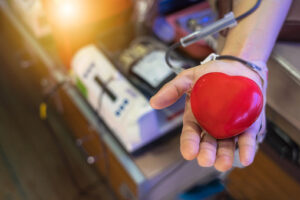Repeat blood donors may deplete their iron stores. The risk of iron-deficiency anemia in blood donors depends on gender, age, and the frequency of blood donations. In order to improve the iron levels in new and repeat donors in Iceland, serum ferritin (SF) testing protocols were modified in October 2017 to include all donations. In addition, the minimum SF donation level was increased from 14 to 16 µg/L for new donors and from 8 to 10 µg/L for repeat donors. In order to ensure the policy changes were effective, SF levels were retrospectively analyzed in all samples collected from the Icelandic blood center between 1997 and 2019. During the study, 32,910 individuals donated 243,369 whole blood units (10,868 female and 22,042 male donors). SF was measured in 85,370 donations—28,385 from new donors and 56,985 from repeat donors. As expected, median SF levels were higher among males compared to females and among new donors compared to repeat donors. After the policy change in 2018, median SF levels increased for repeat donors from 22.0 to 25.7 µg/L for females and 43.0 to 45.2 µg/L for males. Iron deficiency (SF<15 µg/L) was reported in 11.5% of whole blood donations over the study period; iron deficiency was more common in repeat donors compared to new donors and among females compared to males. While the frequency of iron deficiency increased in repeat donors after the policy change for both males and females (due to increased testing), the absolute number of donations with iron deficiency decreased after the policy change (P<0.05 for both donations from males and females). Iron deficiency is relatively common in blood donors but increased monitoring and education for blood donors is beneficial.
Reference:

